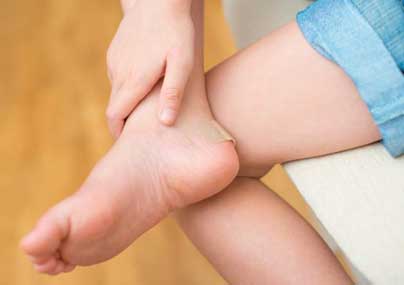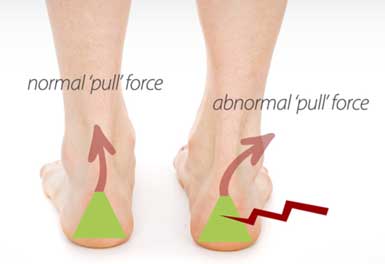Sever’s Disease, Children and Orthotics
- Dr Abbie Clinics
- May 11, 2018
 The most important factor contributing to Sever’s Disease, which causes heel pain in children, is treating the cause and not the symptoms! This means correcting Mechanical factors or ‘excess pronation’ where the feet turn inwards.
The most important factor contributing to Sever’s Disease, which causes heel pain in children, is treating the cause and not the symptoms! This means correcting Mechanical factors or ‘excess pronation’ where the feet turn inwards.
In this situation excessive subtalar joint pronation (rolling in of the feet) creates stress on the Achilles causing traction forces at the insertion point.
The general treatment consensus often prescribed is rest, however telling a highly active sporting child to refrain from all sporting activities is often quite difficult – and does not treat the cause of the problem.
Rest will prevent further injury from occurring, but once sporting activities are resumed, the pain will reoccur.
Orthotics are corrective medically prescribed innersoles designed to support, control and align the foot whilst correcting mechanical issues from the feet up; treating the cause.
Use of orthotic therapy is an excellent treatment regime as it will realign the biomechanical structure and control the excess pronation of the foot, eliminating the tractional pull that occurs at the insertion point.
Orthotics will also stabilise the heel bone and the growth plate thus decreasing the inflammatory processes and pain. Gel and rubber gradient heel lifts are advertised to take the tension from the heels, but do not treat the cause of pain and can even create an unstable platform for everyday walking.
Other Treatments
- Proper footwear – helps in keeping the foot stable and balanced in everyday activities.
- (Low Dye) Strapping – mimics an orthotic device which removes the tractional forces applied to the Achilles.
- Foot Mobilisations – to help re-align the bones of the foot to reduce the stress on the Achilles.
- Avoid stretching until pain diminishes: By stretching the calf and Achilles, this could cause further tearing of the growth plate at the attachment. However, start stretching calves and Achilles when the pain subsides.



